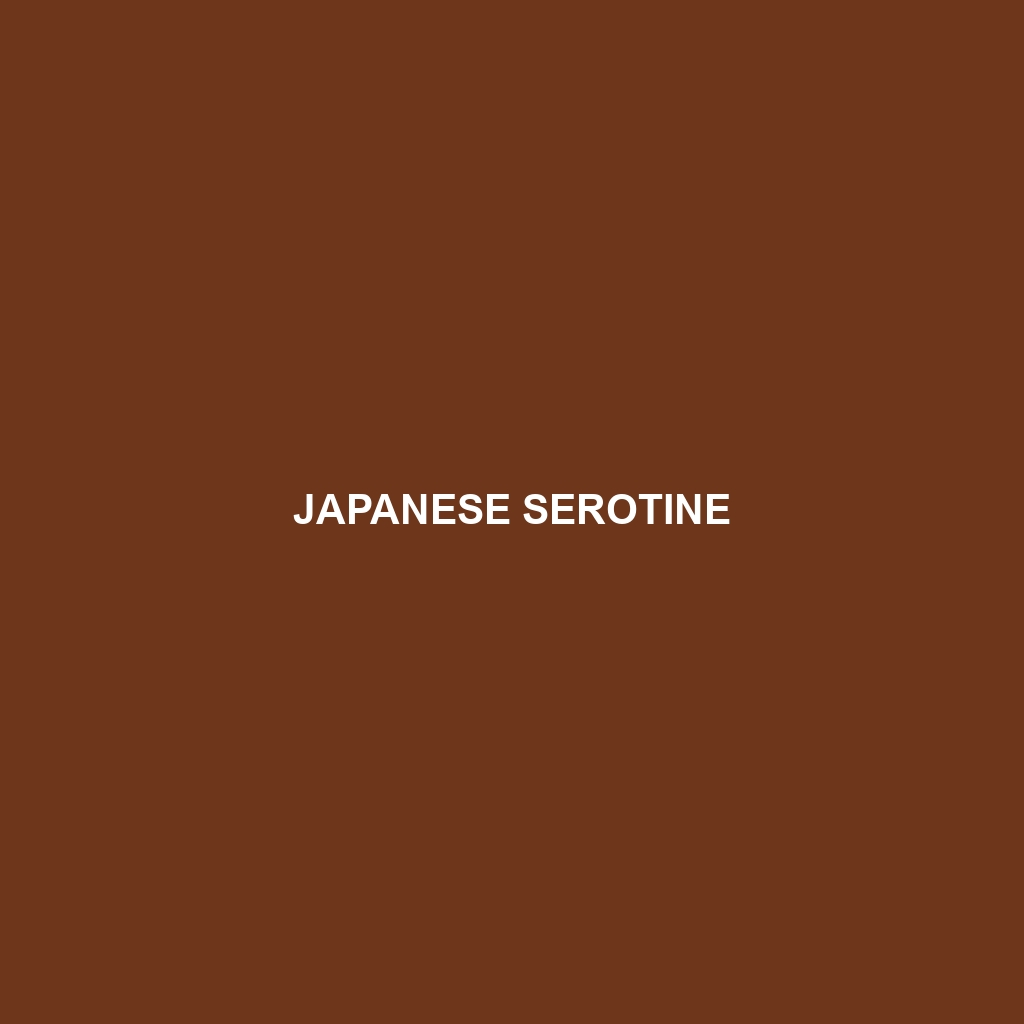Species Description: Japanese Serotine
Common Name: Japanese Serotine
Scientific Name: Lyuralus japonicus
Habitat
The Japanese Serotine is primarily found in the forests and urban areas of Japan, with a notable presence in Honshu and Kyushu islands. This species thrives in both temperate broadleaf forests and sub-tropical environments, favoring habitats with abundant tree cover for roosting and foraging. They are also adapted to urban landscapes, where they can easily find suitable structures for shelter.
Physical Characteristics
The Japanese Serotine typically measures between 9 to 12 cm in body length, with a wingspan that extends up to 30 cm. Its fur ranges from a dark brown to a rich reddish hue, often appearing lighter on the underbelly. One of its distinctive features is the long, pointed ears, which can reach up to 2.5 cm. The Japanese Serotine also showcases a relatively slender body and a characteristic flight pattern that includes graceful gliding.
Behavior
This species exhibits nocturnal behavior, emerging in the evening to hunt for insects. They are known to engage in fascinating aerial displays during twilight, which helps them communicate and establish territory. Japanese Serotines are social bats, often roosting in colonies, which can enhance their foraging efficiency and increase safety from predators. Their echolocation abilities are highly developed, allowing them to navigate and locate prey in complete darkness.
Diet
The diet of the Japanese Serotine primarily consists of insects, particularly moths, beetles, and flies. They actively forage through a variety of habitats, including urban gardens and remote forests. This species plays a crucial role in pest control, contributing to the ecological balance by managing insect populations. The foraging habits of the Japanese Serotine peak during the summer months when insect availability is highest.
Reproduction
The reproductive season for the Japanese Serotine occurs from late spring to early summer. Female bats typically give birth to one or two pups per breeding season, with the gestation period lasting about 60 to 70 days. Maternal care is prominent, as mothers will care for their young in nursery colonies, which often consist of several females with their pups. Interactions among mothers and pups during the early stages are crucial for the survival of the offspring.
Conservation Status
The Japanese Serotine is currently listed as “Least Concern” by the International Union for Conservation of Nature (IUCN). However, they face habitat loss due to urban development and deforestation, which could threaten their populations in the future. Conservation efforts focusing on habitat preservation are essential for maintaining their populations.
Interesting Facts
– Japanese Serotines are known for their longevity, with some individuals living up to 15 years in the wild.
– They can consume up to 2,000 insects in a single night, showcasing their significant role in pest control.
Role in Ecosystem
As insectivorous bats, Japanese Serotines play a vital role in maintaining ecological balance. Their predation on nocturnal insects helps regulate pest populations, contributing positively to agricultural health. Additionally, their droppings serve as a fertilizer, enriching the soil and supporting plant life in their habitat.
